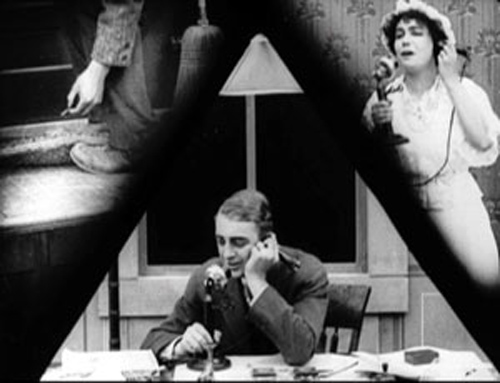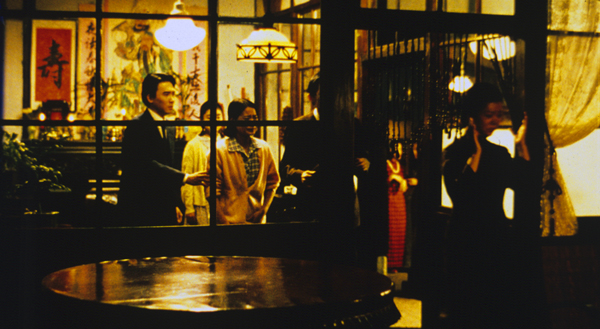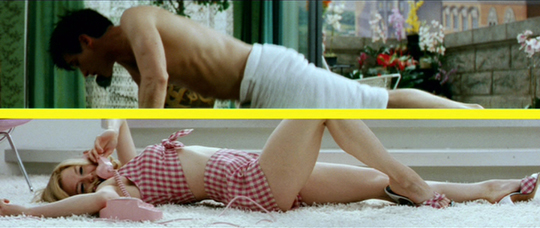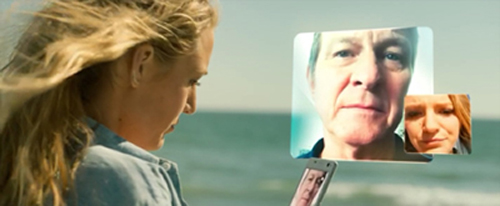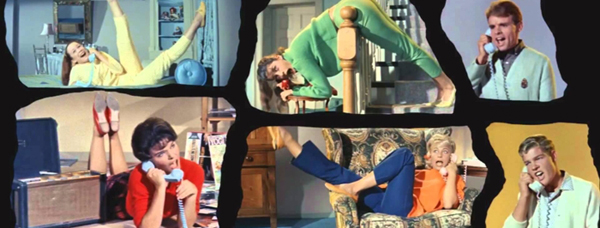Movies by the numbers
Thursday | July 14, 2022 open printable version
open printable version
Everything Everywhere All at Once (2022). Publicity still.
DB here:
Cinema, Truffaut pointed out, shows us beautiful people who always find the perfect parking space. Mainstream movies cater to us through their stories and subjects, protagonists and plots. But they have also been engineered for smooth pickup. Their use of film technique is calculated to guide us through the action and shape our emotional response to it.
How this engineering works has fascinated film psychologists for decades. Over a century ago, Hugo Münsterberg proposed that the emerging techniques of the 1915 feature film made manifest the workings of the human mind. In ordinary life, we make sense of our surroundings by voluntarily shifting our attention, often in scattershot ways. But the filmmaker, through movement, editing, and close framings, creates a concentrated flow of information designed precisely for our pickup. Even memory and imagination, Münsterberg argued, find their cinematic correlatives in flashbacks and dream sequences. In cinema, the outer world has lost its weight and “has been clothed in the forms of our own consciousness.”
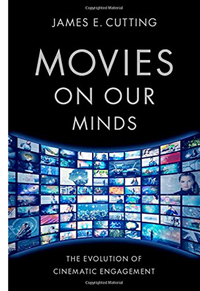 Over the decades, many psychologists have considered how the film medium has fitted itself to our perceptual and cognitive capacities. Julian Hochberg studied how the flow of shots creates expectations that guide our understanding of cinematic space. Under the influence of J. J. Gibson’s ecological theory of perception, Joseph Anderson reviewed the research that supported the idea that films feed on both strengths and shortcomings of the sensory systems we’ve evolved to act in the environment. In more recent years, Jeff Zacks, Joe Magliano, and other visual researchers, have gone on to show how particular techniques exploit perceptual shortcuts (as in Dan Levin’s work on change blindness and continuity editing errors https://vimeo.com/81039224). Outside the psychologists’ community, writers on film aesthetics have fielded similar arguments. An influential example is Noël Carroll’s essay “The Power of Movies.”
Over the decades, many psychologists have considered how the film medium has fitted itself to our perceptual and cognitive capacities. Julian Hochberg studied how the flow of shots creates expectations that guide our understanding of cinematic space. Under the influence of J. J. Gibson’s ecological theory of perception, Joseph Anderson reviewed the research that supported the idea that films feed on both strengths and shortcomings of the sensory systems we’ve evolved to act in the environment. In more recent years, Jeff Zacks, Joe Magliano, and other visual researchers, have gone on to show how particular techniques exploit perceptual shortcuts (as in Dan Levin’s work on change blindness and continuity editing errors https://vimeo.com/81039224). Outside the psychologists’ community, writers on film aesthetics have fielded similar arguments. An influential example is Noël Carroll’s essay “The Power of Movies.”
James Cutting’s Movies on Our Minds: The Evolution of Cinematic Engagement, itself the fruit of many years of intensive studies, builds on these achievements while taking wholly original perspectives as well. Comprehensive and detailed, it is simply the most complete and challenging psychological account of film art yet offered. I can’t do justice to its range and nuance here. Consider what follows as an invitation to you to read this bold book.
Laws of large numbers
The Martian (2015). Publicity still.
Cutting’s initial question is “Why are popular movies so engaging?” He characterizes this engagement—a more gripping sort than we experience with encountering plays or novels—as involving four conditions: sustained attention, narrative understanding, emotional commitment, and “presence,” a sense that we are on the scene in the story’s realm. Different areas of psychology can offer descriptions and explanations of what’s going on in each of these dimensions of engagement.
His prototype of popular cinema is the Hollywood feature film—a reasonable choice, given its massive success around the world. The period he considers runs chiefly from 1920 to 2020. He has run experimental studies with viewers, but the bulk of his work consists of scrutinizing a large body of films. Depending on the question he’s posing, he employs samples of various sizes, the largest including up to 295 movies, the smallest about two dozen. Although he insists he’s not concerned with artistic value, most are films that achieved some recognition as worthwhile. He and his research team have coded the films in their sample according to the categories he’s constructed, and sometimes that process has entailed coding every frame of a movie.
Like most researchers in this tradition, Cutting picks out devices of style and narrative and seeks to show how each one works in relation to our mind. His list is far broader than that offered by most of his predecessors; he considers virtually every film technique noted by critics. (I think he pins down most of those we survey in Film Art.) In some cases he has refined standard categories, such as suggesting varieties of reaction shot.
Starting with properties of the image (tonality, lens adjustments, mise-en-scene, framing, and scale of projection), he moves to editing strategies, the soundtrack, and then to matters of narrative construction. For each one he marshals statistical evidence of the dominant usage we find in popular films. For example, contemporary films average about 1.3 people onscreen at all times, while in the 1940s and 1950s, that average was about 2.5. Across his entire sample, almost two-thirds of all shots show conversations—the backbone of cinematic narrative. (So much for critics who complain that modern movies are overbusy with physical action.) And people are central: 90% of all shots show the head of one or more character.
Some of these findings might appear to be simply confirming what we know intuitively. But Big Data reveal patterns that neither filmmakers nor audiences have acknowledged. Granted, we’ve all assumed that reaction shots are important in cueing the audience how to respond. Cutting argues that despite their comparative rarity (about 15% of a film’s total) they are central to our overall experience: they are “popular movies’ most important narrational device.” They invite the audience to engage with the character’s emotions, and they encourage us to predict what will happen next.
This last role emerges in what Cutting calls the “cryptic reaction shot,” in which the response is ambivalent. Such shots show a moment when a character doesn’t speak in a conversation (for example, Jim’s reactions in my Mission: Impossible sequence). Filmmakers seem to have learned that
these shots are an excellent way to hook the viewer into guessing what the character is thinking—what the character might have said and didn’t. They also serve as fodder for predicting what the character will do next (174-175).
Cryptic reactions gather special power at the scene’s end. Whereas films from the 1940s and 1950s ended their scenes with such shots about 20% of the time, today’s films tend to end conversations with them almost two-thirds of the time. Since reading Cutting’s book I’ve noticed how common this scene-ending reaction shot is in movies (TV shows too). It’s a storytelling tactic that nobody, as far as I know, had previously spotted.
Similarly, Cutting tests Kristin’s model of feature films’ prototypical four-part structure. He finds it mostly valid, both in terms of data clustering (movement, shot lengths, etc.) and viewers’ intuitions about segmentation. But who would have expected what he found about what screenwriters call the “darkest moment”? Using measures of luminance, he finds that “this point literally is, on average, the darkest part of a movie segment” (285).
Cutting has found resourceful ways to turn factors we might think of as purely qualitative into parameters that can be counted and compared. To gauge narrative complexity, he enumerates the number of flashbacks, the amount of embedding (stories within stories), and particularly the number of “narrational shifts” in films. Again, there is a change across history.
Movies jump around among locations, characters, and time frames considerably more often than they used to. . . . Scenes and subscenes have gotten shorter. In 1940, they averaged about a minute and a half in duration, but by 2010 they were only about 30 seconds long (271-272).
His illustrative example is the climax of The Martian, where in four minutes and 35 shifts, the narration cuts together seven locations, all with different characters. Something similar goes on in the motorcycle chase of Mission: Impossible II and the final seventy minutes of Inception.
These examples show that Cutting is going far beyond simply tagging regularities in an atomistic fashion. Throughout, he is proposing that these patterns perform functions. For the filmmakers, they are efforts to achieve immediate and particular story effects, highlighting this or that piece of information. Showing few people in a shot help us concentrate on the most important ones. Conversations are the most efficient way to present goals, conflicts, and character relationships. Editing among several lines of action at a climax builds suspense. He suggests that because viewer mood is correlated with luminance, the darkest moment is triggering stronger emotional commitment.
But Cutting sees broader functions at work underneath filmmakers’ local intentions. Movies’ preferred techniques, the most common items on the menu, smoothly fit our predispositions—our tendencies to look at certain things and not others, to respond empathically to human action, to fit plots together coherently. Filmmakers have intuitively converged on powerful ways to make mainstream movies fit humans’ “ecological niche.”
And those movies have, across a century, found ways to snuggle into that niche ever more firmly. As we have learned the skills of following movie stories, filmmakers have pressed us to go further, stretching our sensory capacities, demanding faster and subtler pickup of information. Cutting’s numbers lead us to a conception of film history, the “evolution of cinematic engagement” promised in his subtitle.
Film history without names
Suspense (Weber and Smalley, 1913).
Central to Cutting’s psychological tradition is the idea that engagement depends minimally on controlling and sustaining attention. The techniques itemized almost invariably function to guide the viewer to see (or hear) the most important information. Filmmakers discovered that you can intensify attention by cooperation among the cues. Given that humans, especially faces, carry high information in a scene, you can use lighting, centered position, frontal views, close framings, figure movement, and other features of a shot to reinforce the central role of the humans that propel the narrative. When the key information doesn’t involve faces or gestures, you can give objects the same starring role.
Movies on Our Minds is very thorough in showing through statistical evidence that all these techniques and more combine to facilitate our attention. As an effort of will you can focus your attention on a lampshade, but it won’t yield much. The line of least resistance is to go with what all the cues are driving you to. But the statistical evidence also points to changes across history. What’s going on here?
Most basically, speedup. Cutting asked undergraduate students to go through films twice, once for basic enjoyment and then frame by frame, recording the frame number at the beginning and ending of each shot. He found that by and large the students enjoyed the older films, but some complained that these older movies were slower than what they ordinarily watched.
This impression accords with both folk wisdom and film research. Most viewers today note that movies feel very fast-moving, compared with older films. There’s also a considerable body of research indicating that cutting rates have accelerated since at least the 1960s. More loosely, I think most people think that story information is given more swiftly in modern movies; our films feel less redundant than older ones. Exposition can be very clipped. Abrupt changes from scene to scene are accentuated by the absence of “lingering” punctuation by fade-outs or dissolves. Indeed, one scene is scarcely over before we hear dialogue or sound effects from the next one. Characters’ motives aren’t always spelled out in dialogue but are evoked by enigmatic images or evocative sound. The Bourne Identity attracted notice not just for its fragmentary editing but also for its blink-and-you’ll-miss-them “threats on the horizon”—virtually glimpses of what earlier films would have dwelled on more. From this angle, Everything Everywhere All at Once represents a kind of cinema that grandpa, and maybe dad, would find hard to follow. (Actually, I’m told that some audiences today have trouble too.)
In The Way Hollywood Tells It, I suggested some causal factors shaping speedup, including various effects of television. Cutting grants that these may be in play, but just as he looks for an underlying pattern of functional factors in his ecology of the spectator, he posits a broad process of cinematic evolution similar to that in biology.
Look at film history simply as succession of movies. From a welter of competing alternatives, some techniques are selected and prove robust. They are replicated, modified in relation to the changing milieu. Others fail. For instance, the split-screen telephone shot of early cinema, as in the above frame from Suspense, became “a failed mutation” when shot/ reverse-shot editing for phone calls became dominant. As the main line of descent has strengthened, variation has come down to “selected tweaks” like eyelights and Steadicam movement.
Within this framework, filmmakers and audiences participate in a give-and-take.Through trial and error, early filmmakers collectively found ways to make films mesh with our perceptual proclivities. As viewers became more skilled in following a movie’s lead, there was pressure on filmmakers to go further and make more demands. If attention could be maintained, then shots could be shorter, scenes could move faster, redundancy could be cut back, complexity could be increased.
Viewers responded positively, embracing the new challenges of quicker pickup. As viewers became more adept, filmmakers could push ahead boldly, toward films like Memento and Primer. The most successful films, often financially rewarding ones like The Martian and Inception, suggest that filmmakers have continued to fit their boundary-pushing impulses to popular abilities.
Which means that audiences have adapted to these demands. But this isn’t adaptation in the strong Darwinian sense. With respect to his students’ reactions, Cutting writes:
I think . . . that the eye of a 20-year-old in the 2010s was faster at picking up visual information than the eye of a 20-year-old in the 1940s. This is not biological evolution. This is cultural education, however incidental it might be.
This process of cultural education, he suggests can be understood using Michael Baxandall’s concept of the “period eye.” Baxandall studied Italian fifteenth-century painting and posited that an adult in that era saw (in some sense) differently than we do today. Granted, people have a common set of perceptual mechanisms, but cultural differences intervene. Baxandall traced some socially-grounded skills that spectators could apply to paintings. In parallel fashion, given the rapidity of cultural change in the twentieth century, young people now may have gained an informal visual education, a training of the modern eye in the conventions of media.
Cutting insists that he isn’t suggesting that our attention spans have recently decreased, as many maintain. Instead, the idea of a period eye centers on
the growth and improvement of visual strategies as shaped by culture. If this idea is correct, then contemporary undergraduates have reason to complain about movies from the 1940s and 1950s that I asked them to watch.
By this account, film teachers have to recognize that their students, for whom any film before 2000 is an old movie, are possessed of a constantly changing “period eye.”
Failed mutations, or revision and revival?
City of Sadness (Hou, 1989).
I do have some minor reservations, which I’ll introduce briefly.
First, I don’t think that Baxandall’s idea of a period eye is a good fit for the dynamic that Cutting has identified. Baxandall’s concern is with a narrow sector of the fifteenth-century public: “the cultivated beholder” whom “the painter catered for.”
One is talking not about all fifteenth-century people, but about those whose response to works of art was important to the artist—the patronizing class, one might say. In effect this means a rather small proportion of the population: mercantile and professional men, members of confraternities or as individuals, princes and their courtiers, the senior members of religious houses. The peasants and the urban poor play a very small part in the Renaissance culture that most interests us now.
Ordinary viewers could recognize Jesus and Mary, the Annunciation or the Crucifixion, but for Baxandall the “period eye” involved a specific skill set. This was derived from such domains as business, surveying, ready reckoning, and a widespread artistic concepts like “foreshortening” or “stylistic ease.” The study of geometry prepared the perceiver to appreciate the virtuosity of perspective or proportion, but the untutored viewer could only marvel at the naturalness of the illusion.
It seems to me that Cutting’s 20-year-olds are not prepared perceivers in Baxandall’s sense. True, they may be alert to faulty CGI or a lame joke, but the whole point of focusing on mass-entertainment movies is that they engage multitudes, not coteries. The techniques Cutting explores are immediately grasped by nearly everybody, and no esoteric skills are necessary to feel their impact. Baxandall’s viewer is able to appreciate a painter’s rendition of bulk because he’s used to estimating a barrel’s capacity, but all Cutting’s viewer needs to get everything is just to pay attention.
Because the skills of following modern movies are so widespread, I wonder if Cutting’s case better fits the explorations of Heinrich Wöfflin, who flirted with the idea that “seeing as such has its own history, and uncovering these ‘optical strata’ has to be considered the most elementary task of art history.” Throughout his late career Wöfflin struggled to make the “history of vision” thesis intelligible. At times he implied that everyone in a given era “saw” in a way different from people in other eras. At other times he proposed that of course everyone sees the same thing but “imagination” or “the spirit” of the period and place shape how we understand what we see. This is murky water, and you can sense my skepticism about it. I don’t see how we could give the “period eye” for cinema much oomph on this front, but I think we might salvage Cutting’s central point. See below.
Secondly, by concentrating on mass-market cinema, “the movies,” and suggesting they fit our evolved capacities, we can easily overlook the alternatives. Obvious examples are the earliest cinema, which did involve some precise perceptual appeals (centering, frontality, selective lighting, emphasis through foreground/background relations) but not all the ones associated with editing. Given that tableau cinema had a longish ride (1895-1920 or so), it’s not inconceivable that, had circumstances been different, we would still have a cinema of distant framings and static long takes.
Cutting is aware of this. Rewind the tape of history, he says, and eliminate factors like World War I, and things could have turned out differently. But where would a long-running tableau cinema leave the story of cinema’s dynamic of natural selection? Would we have simply a steady state, without the acceleration of the last sixty years? Or would we look within the long history of tableau cinema for mutations and failed adaptations?
We have contemporary examples, in what has come to be called “slow cinema.” Hou Hsiao-hsien, Theo Angelopoulos, and other modern filmmakers have exploited the static long take for particular aesthetic effects. In another universe, they are the “movies” that hordes flock to see. Tableau cinema seems to me not a failed mutation, replaced by a style that more tightly meshed with spectators’ proclivities; it was an aesthetic resource that could be revived for new purposes. On a smaller scale, something like this happened with split-screen phone calls (as in Down with Love and The Shallows).
As the other arts show us, the past is available for re-use in fresh ways. Maybe nothing really goes away.
Which brings me to my last point. Baxandall’s emphasis on skills reminds us that we can acquire a new “eye” for appreciating films outside the mainstream. Cutting’s 20-somethings can learn to appreciate and even enjoy films that might strike them as slow. We call this the education of taste.
My inclination is to see the contemporary embrace of speedup as based in filmmakers’ and viewers’ more or less unthinking choices about taste. Indeed, Baxandall suggests that the period eye is a matter of “cognitive style,” a set of skills one person may have and another may lack.
There is a distinction to be made between the general run of visual skills and a preferred class of skills specially relevant to the perception of works of art. The skills we are most aware of are not the ones we have absorbed like everyone else in infancy, but those we have learned formally, with conscious effort: those which we have been taught.
Once the skills have been taught, we can exercise them for pleasure.
If a painting gives us opportunity for exercising a valued skill and rewards our virtuosity with a sense of worthwhile insight about that painting’s organization, we tend to enjoy it: it is to our taste.
I’d suggest that we have “overlearned” the skills solicited by mainstream movies and made them the automatic default for our taste. But we can also learn the skills for appreciating 1910s tableau cinema or City of Sadness. As we do so, we find we have cultivated a new dimension of our tastes. From this standpoint, the sensitive appreciators of slow cinema are far more like Baxandall’s educated Renaissance beholders than are the Hollywood mass audience. Perhaps to enjoy Feuillade or Hou today is to possess a genuine “period eye.”
None of this undercuts Cutting’s findings. But given the variety of options available, I’d argue that what the history of cinema reveals, among many other things, is a history of styles—some of which are facile to pick up, for reasons Cutting and his tradition indicate, and others which require effort and training and an open mind. Not clear-cut evolution, then, but just the blooming plurality we find in all the arts, with some styles becoming dominant and normative and others becoming rarefied . . . until artists start to make them mainstream. And the whole ensemble can be mixed and remixed in unpredictable ways.
There’s far too much in Movies on Our Minds to summarize here. It’s a feast of ideas and information, presented in lively prose. (The studies that the book rests upon are far more dependent upon statistics and graphs.) I should disclose that I read the book in manuscript and wrote a blurb for it. Consider this entry, then, as born of a strong admiration for James’s project.
Cutting’s book rests on years of intensive studies. Go to his website for a complete list. Most recently, he has traced a rich array of phone-call regularities across a hundred years. He has been a recurring player on this blog, notably here and here. James and I spent a lively week watching 1910s films at the Library of Congress, with results recorded here and here. The last link also provides more examples of revived “defunct” devices.
The tradition of film-psychological research I rehearse includes Hugo Münsterberg, The Film: A Psychological Study in Hugo Munsterberg on Film: The Photoplay: A Psychological Study and Other Writings, ed. Allan Langdale (Routledge, 2001; orig. 1916); In the Mind’s Eye: Julian Hochberg on the Perception of Pictures, Films, and the World, ed. Mary A. Peterson, Barbara Gillam, H. A. Sedgwick (New York: Oxford, 2007); Joseph D. Anderson, The Reality of Illusion: An Ecological Approach to Cognitive Film Theory (Southern Illinois University Press, 1996); Jeffrey Zacks, Flicker: Your Brain on Movies (Oxford, 2014). Noël Carroll’s essay “The Power of Movies” is included in his collection Theorizing the Moving Image (Cambridge, 1996).
Michael Baxandall’s most celebrated work is Painting and Experience in Fifteenth-Century Italy (Oxford, 1972); citations come from pages 29-29. My mention of Wölfflin relies on Principles of Art History: The Problem of the Early Development of Style in Early Modern Art, trans. Jonathan Blower (Getty Research Institute, 2015). My citation comes from p. 93.
One reference point for Cutting’s work is a book Kristin and I wrote with Janet Staiger, The Classical Hollywood Cinema, discussed here. See also Kristin’s Storytelling in the New Hollywood, which elaborates the argument for the four-part model, and my books On the History of Film Style and The Way Hollywood Tells It, along with the web video “How Motion Pictures Became the Movies.”
Bye Bye Birdie (1963).














